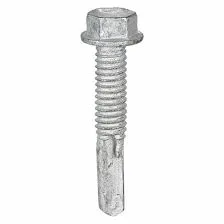stud shear
Understanding Stud Shear Key Concepts in Structural Engineering
In the domain of structural engineering, the study of shear forces is paramount for ensuring the stability and integrity of various structures. Among the many types of shear forces analyzed, stud shear plays a vital role, particularly in the context of connections between different components, such as beams, columns, and slabs. This article aims to elucidate the concept of stud shear, its significance, and its applications in modern engineering.
Stud shear refers to the shear force that acts on the vertical elements known as studs, which are commonly used in framed structures. These studs are typically vertical members in a wall frame, often constructed from steel or timber. They serve as support for various loads, including those from the roof and floors, and must be designed to resist lateral forces resulting from wind, seismic activity, and other dynamic loads.
One of the primary concerns in structural design is how studs interact with other elements, particularly how they transfer loads through shear. The connection between studs and other elements, such as beams or plates, is critical in maintaining the overall stability of a structure. When a load is applied, it generates shear forces at these connections. If the shear capacity of the studs or the connecting elements is exceeded, it may lead to failure, which can have catastrophic consequences.
To ensure that studs can adequately handle shear forces, engineers must perform detailed analyses during the design phase. This involves understanding the material properties of the studs, the nature of the loads they will face, and the particular design codes and standards applicable to the project. By following established guidelines, engineers can calculate the maximum shear force that can be safely resisted and ensure that the design provides an adequate safety margin.
stud shear

Several factors impact the stud shear capacity, including the type of material used, the dimensions of the stud, and the configuration of the connections. For instance, steel studs have high shear strength and are often used in commercial and industrial buildings due to their durability and resistance to deformation. Conversely, wooden studs are typically utilized in residential constructions but require careful consideration of moisture content and load duration, as these factors can significantly influence their shear capacity.
Stud shear is also a critical consideration in the design of shear walls, which are structural elements that provide lateral support to a building. Shear walls are essential in high-rise constructions where wind and seismic forces can cause a building to sway. The connection between the shear wall and the studs must be adequately designed to transfer these forces effectively, ensuring that the entire structure behaves cohesively under load.
Furthermore, advancements in engineering software have equipped designers with the tools to simulate how shear forces act on structures more accurately. Building Information Modeling (BIM) and finite element analysis (FEA) allow for a more thorough examination of stress distribution and potential weak points within a structure. These technologies enable engineers to optimize their designs, enhancing safety and performance while minimizing material costs.
In conclusion, understanding stud shear is crucial for structural engineers as it directly impacts the safety and effectiveness of buildings. By carefully considering the interactions between studs and other structural components, employing rigorous design practices, and utilizing modern analytical tools, engineers can create structures that withstand various loads and environmental conditions. As the field of structural engineering continues to evolve, ongoing research and innovation will further enhance our understanding of shear forces, leading to safer and more resilient infrastructure for the future.
-
Weatherproof Plastic Expansion Anchors for OutdoorNewsJun.06,2025
-
Sustainability in the Supply Chain: Eco-Friendly TEK Screws ProductionNewsJun.06,2025
-
Load-Bearing Capacity of External Insulation FixingsNewsJun.06,2025
-
Double Head Bolts: Enhancing Efficiency in Industrial MachineryNewsJun.06,2025
-
Corrosion Resistance in Chipboard Screws: Coatings for Wholesale DurabilityNewsJun.06,2025
-
Butterfly Toggle Bolts : Enhancing Structural ResilienceNewsJun.06,2025
